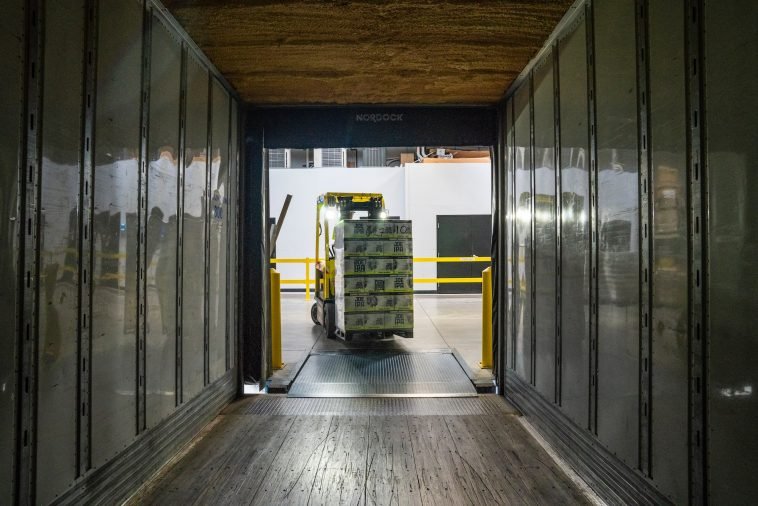Introduction.
Running an online store through Shopify can be an exciting venture, especially when you tap into the world of dropshipping.
With minimal upfront investment, dropshipping offers an accessible way to break into e-commerce without worrying about inventory storage or shipping logistics.
But as your store gains traction, you might quickly realize that fulfilling orders is one of the most critical parts of the process.
Get it right, and your customers will be happy, your reviews will shine, and your store will continue to grow.
But get it wrong, and even the best marketing strategies won’t save you from disappointed shoppers and potential headaches.
Why is understanding the ins and outs of order fulfilment so important? Because it’s where your business goes from a digital storefront to a tangible experience for your customers.
It’s not just about making sales—it’s about creating a seamless process that ensures your shoppers get what they ordered in a timely fashion.
A smooth fulfillment process can also save you time and money, which are both precious resources in the world of e-commerce.
So, let’s dive into how to fulfill orders on Shopify for your dropshipping business. I’ll guide you through a comprehensive look at different methods, their pros and cons, and how you can make the best choice based on your business needs.
The Basics of Shopify Dropshipping Order Fulfillment
Before getting into the details, it’s worth understanding what happens when someone places an order on your Shopify store. Once a customer makes a purchase, Shopify captures their payment, and you receive a notification.
From there, it’s up to you to fulfill the order, either manually or automatically, and ensure your supplier ships the product to your customer.
Depending on your strategy, there are two main ways to handle order fulfillment in dropshipping: automatic and manual. Each has its advantages and potential downsides, which I’ll break down below.
1. Automatic Fulfillment: The Easy Way Out?
With automatic order fulfillment, you set up your Shopify store to handle the process without much input. As soon as an order comes through, your store communicates with your supplier, sends them the customer’s details, and the supplier begins the shipping process.
Pros of Automatic Fulfillment:
- Saves Time: Less time spent managing orders means more time to focus on marketing or other aspects of your business.
- Reduces Human Error: Fewer mistakes are made when processes are automated, which helps maintain customer satisfaction.
- Scalability: If your business takes off and you start getting hundreds of orders, automatic fulfillment becomes a lifesaver.
Cons of Automatic Fulfillment:
- Less Control: Once the order is placed, you might not have as much oversight over the shipment, which could be stressful if something goes wrong.
- Potential Issues with Suppliers: If your supplier is unreliable or slow, automatic fulfillment might magnify these problems, leaving you with unhappy customers.
2. Manual Fulfillment: A Hands-On Approach
For manual fulfillment, you’ll need to step in and process each order yourself. This method can be more work, but it gives you greater control over every aspect of your orders.
Pros of Manual Fulfillment:
- Greater Control: You can double-check order details, communicate with the supplier, or make any necessary adjustments before the item ships.
- Personalized Experience: Adding a touch of personalization, like a thank-you email or note, can go a long way in boosting customer loyalty.
Cons of Manual Fulfillment:
- Time-Consuming: Manually processing each order becomes increasingly difficult as your store scales.
- Higher Chance of Mistakes: As humans, we’re prone to errors, and mistakes can lead to delays or incorrect shipments.
Which Method is Right for You?
Your decision depends on your store’s size, the volume of orders, and your goals for the business. If you’re just starting out and want to ensure every order is perfect, manual fulfillment might make sense.
However, if your store is growing fast and you need to streamline processes, automation will be your best friend.
The good news is that Shopify makes it easy to test both methods and see which one works best. You can always start manually and then move to an automated system as your store expands.
How Do I Fulfil Orders On Shopify Dropshipping?
Here’s a simplified walkthrough to help you get started with order fulfilment:
1. Order Notification: Once an order is placed, you’ll receive a notification via email or on your Shopify dashboard.
2. Verify the Order: Double-check the order details for accuracy, including the customer’s name, shipping address, and product specifications.
3. Connect with Your Supplier: If you’re using an app like Oberlo or DSers, the process may be automated. If not, you’ll need to place the order manually with your supplier.
4. Mark as Fulfilled: Once the order is in your supplier’s hands, mark it as “fulfilled” on your Shopify admin panel. This step usually triggers a notification email to the customer, updating them on the status of their order.
5. Monitor Shipment: Keep an eye on the tracking information to ensure everything is moving smoothly. Even if you’re automating the process, it’s wise to check in occasionally.
Common Challenges and How to Overcome Them
Fulfilling orders might sound straightforward, but there are some challenges you should be aware of:
- Shipping Delays: Sometimes, your supplier might face delays, which could impact your customers. To manage this, communicate with your customers and keep them updated.
- Lost or Damaged Items: If an item goes missing or arrives damaged, work with your supplier to rectify the issue. Having a good returns and refunds policy can help smooth things over.
- Multiple Suppliers: If you work with several suppliers, fulfilling orders can get complicated. Tools like Oberlo or Spocket can help streamline the process.
FAQs
1. How long does fulfillment usually take?
This depends on your supplier and shipping method. On average, expect anywhere from 3 to 15 days. Make sure to set realistic expectations with your customers.
2. Can I customize the packaging or add branding?
Some suppliers offer branding options, but many do not. If custom packaging is essential for your brand, make sure to choose suppliers that provide this service.
3. What if my customer wants to return a product?
Returns in dropshipping can be tricky. Often, you’ll need to coordinate with the supplier, but having a clear return policy in place will help manage customer expectations.
4. Should I always choose automatic fulfilment?
Not necessarily. Automatic fulfilment is ideal for scaling businesses, but if you’re still testing your product range or are very quality-focused, manual fulfillment might be better.
5. How do I know if a supplier is reliable?
Read reviews, order samples, and check for red flags like slow communication or hidden fees. Trustworthy suppliers are responsive and transparent.
Conclusion
Mastering order fulfilment on Shopify can feel like a balancing act between efficiency and control. But the good news is that, with a bit of trial and error, you’ll find a method that works for you and your business.
As your store grows, don’t be afraid to adjust your approach to keep your customers happy and your workflow as smooth as possible.
So, which fulfillment strategy are you leaning toward for your Shopify store?





GIPHY App Key not set. Please check settings